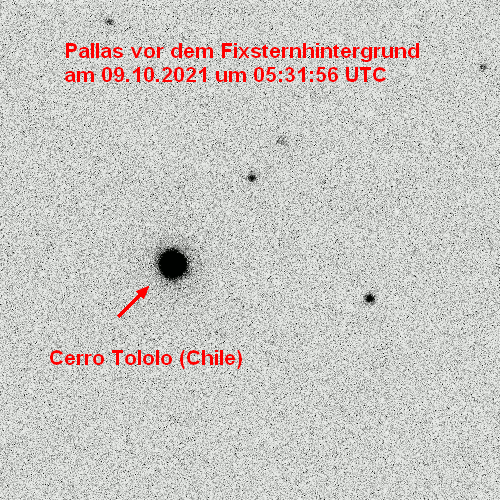-
Faulkes Telescope Project Privacy Policy
Pallas’ Parallax!
Parallax is the phenomenon whereby the position of an object appears to change when observed from different locations. The easiest way to see parallax in action is to stretch out your arm in front of you and hold up your thumb. If you close your left eye, then open it again and close your right eye, you’ll notice that the position of your thumb seems to move in relation to its background. This ‘move’ can be used to determine the distance between your eye and your thumb!
Okay, perhaps calculating the distance to your own thumb is not such an interesting activity to do, but what if you could use the same method to calculate the distance to an asteroid? That is exactly what students in Germany have been doing!

The students in Figure 1 accessed two telescopes at the same time, but at different sites within the LCO network, Cerro Tololo (Chile) and Haleakala (Hawai’i) to observe the asteroid, Pallas.

Figure 2 shows two of the students’ images where you can see how the asteroid ‘jumps’ in the field of view. The students were able to calculate the distance to Pallas within approximately 5% of the value that is recorded on NASA’s database!
You can read about their work in full here.
Thanks to Paul Breitenstein for sharing this fantastic work and story with us!
